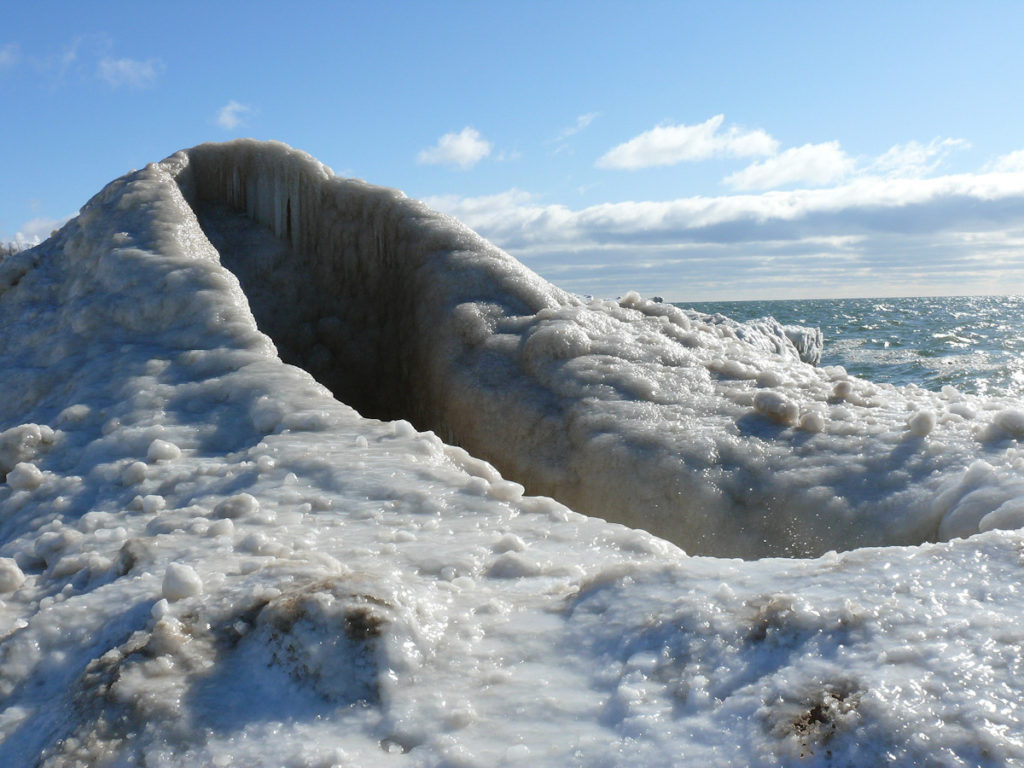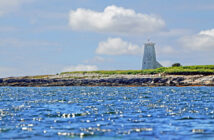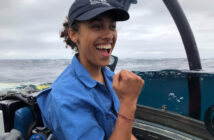Ice volcanoes can be fascinating to observe, but keep a safe distance. They have brittle peaks and are dangerous to climb.
A conical mound of ice formed over a terrestrial lake by the eruption of water and slush through an ice shelf is known as an ice volcano. The process is driven by the wind, which provides the energy for the waves to cut through the ice and form the so-called volcanoes. The liquid water and slush ejected into the atmosphere freeze and fall back to the surface, expanding the formation. Ice may also be thrown up. When the temperature is below freezing and the wind is blowing onshore with a velocity of at least 25 mph (40 km/h), the phenomenon is most commonly observed along the southern coasts of Lake Erie and Lake Ontario. They are known to help/reduce with coastal erosion. The formations are only temporary: they are frequently destroyed by storms and warm weather, and eruptions are no longer possible once the lake completely freezes over.
There is no agreed-upon term for this phenomenon. Because of its resemblance to volcanism, particularly cryovolcanism, the term “ice volcano” is frequently used, but it is debatable. Ice volcanoes, unlike geysers and similar structures, are not hydrothermal.

Because landfast ice is required, volcanoes typically form near land. They are found in successive rows, and the features within one row are usually of equal height and spacing. However, when comparing two rows, the height and spacing may differ significantly. The height of ice volcanoes ranges from less than one metre to ten metres, with the largest ones located far from the shore. Eruptions over ten metres high have been observed, but the height of the eruptions is thought to be proportional to the size of the mounds. A single eruption can raise the volcano’s height by several centimetres. When an eruption occurs above 0 °C, however, the water erodes rather than expands the uplift.
The amplitude and direction of the waves determine the spacing. In general, the appearance and number of ice volcanoes vary greatly between winters.








